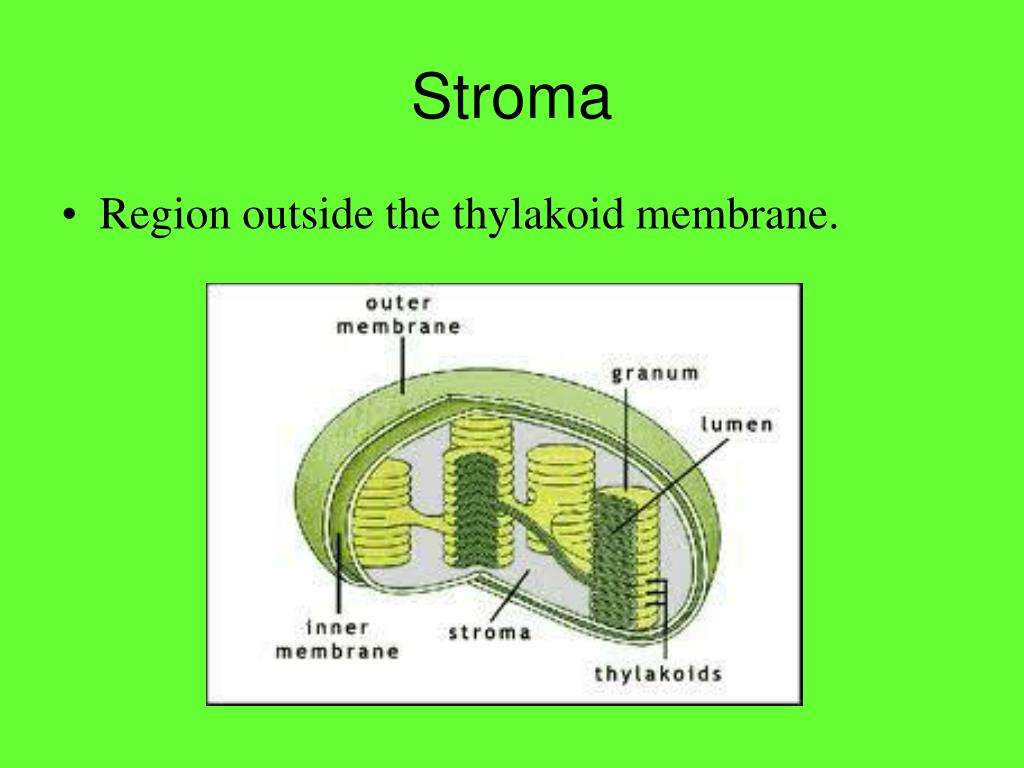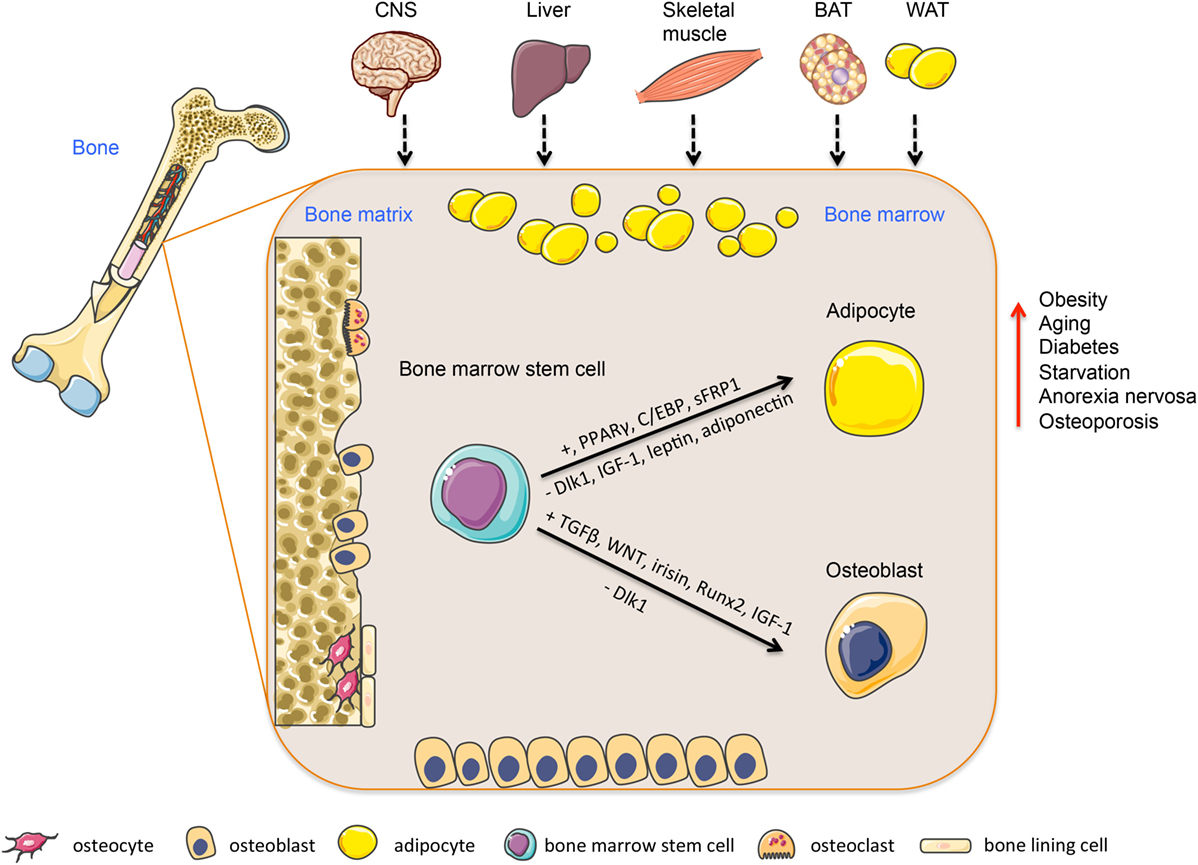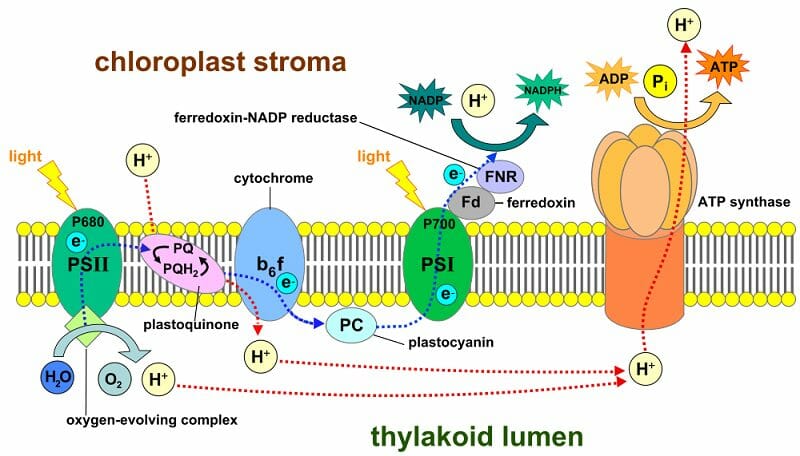How are.stroma regulated – How are stroma regulated? This question delves into the intricate world of cellular support systems, often overlooked yet crucial for maintaining the health and proper function of our tissues and organs. Stroma, the connective tissue surrounding cells, acts as a silent conductor, orchestrating cellular communication, providing structural support, and influencing cell behavior. Just like a well-constructed stage sets the scene for a captivating performance, a properly regulated stroma allows cells to function harmoniously, contributing to the overall well-being of the organism.
Disruptions in this delicate balance can lead to a cascade of problems, contributing to the development of various diseases. From cancer to fibrosis, the dysregulation of stroma plays a significant role in a multitude of health challenges. Understanding the intricate mechanisms that govern stroma regulation is therefore essential for developing effective therapies and preventing disease.
Introduction to Stroma Regulation

The stroma, the supportive framework of organs and tissues, plays a crucial role in maintaining cellular function and tissue homeostasis. It provides structural support, facilitates communication between cells, and regulates the microenvironment surrounding cells. Stroma regulation involves intricate processes that control the composition, organization, and function of the stroma. Dysregulation of these processes can lead to a variety of pathological conditions, highlighting the critical importance of maintaining stromal homeostasis.
Levels of Stroma Regulation
Stroma regulation occurs at multiple levels, from the molecular level to the tissue level, encompassing complex interactions between cells, signaling molecules, and extracellular matrix components.
- Molecular Level: At the molecular level, stroma regulation involves the precise control of gene expression, protein synthesis, and post-translational modifications. This includes the regulation of factors involved in extracellular matrix production, cell adhesion, and cell signaling. For example, the expression of collagen, elastin, and other extracellular matrix proteins is tightly controlled to ensure the proper structural integrity of tissues.
- Cellular Level: At the cellular level, stroma regulation involves the coordinated activities of various cell types, including fibroblasts, endothelial cells, immune cells, and pericytes. These cells interact with each other and with the extracellular matrix through complex signaling pathways, influencing stromal composition and function. For instance, fibroblasts are responsible for producing the majority of the extracellular matrix, while endothelial cells form blood vessels, providing oxygen and nutrients to the surrounding tissues.
- Tissue Level: At the tissue level, stroma regulation involves the organization and spatial arrangement of cells and extracellular matrix components. This organization contributes to tissue-specific functions and maintains tissue homeostasis. For example, the stroma of the liver is highly organized to support the function of hepatocytes, while the stroma of the brain is designed to facilitate neuronal communication.
Molecular Mechanisms of Stroma Regulation: How Are.stroma Regulated
The stroma, the supportive tissue surrounding epithelial cells, plays a critical role in maintaining tissue homeostasis and regulating various cellular processes. Understanding the intricate molecular mechanisms governing stroma regulation is crucial for deciphering its involvement in health and disease. This section delves into the key signaling pathways, growth factors, cytokines, extracellular matrix components, transcription factors, and epigenetic modifications that orchestrate stroma regulation.
Signaling Pathways in Stroma Regulation, How are.stroma regulated
Signaling pathways act as intricate communication networks within the stroma, relaying information about cellular status and environmental cues. These pathways are essential for coordinating stromal cell behavior, influencing cell growth, differentiation, and the production of extracellular matrix components. Several key signaling pathways are involved in stroma regulation, including:
- Wnt Signaling Pathway: This pathway plays a pivotal role in cell fate determination, tissue morphogenesis, and stem cell maintenance. It regulates stromal cell proliferation, differentiation, and the production of extracellular matrix components. Dysregulation of Wnt signaling has been implicated in various diseases, including cancer.
- Hedgehog Signaling Pathway: This pathway is involved in tissue patterning, cell proliferation, and differentiation. It influences stromal cell development and the production of factors that support epithelial cell growth. Aberrant hedgehog signaling has been linked to cancer and developmental disorders.
- Transforming Growth Factor-beta (TGF-β) Signaling Pathway: TGF-β signaling is a multifaceted pathway with diverse roles in cell growth, differentiation, and the regulation of extracellular matrix production. It influences stromal cell activity, contributing to tissue repair and fibrosis.
- Notch Signaling Pathway: This pathway is involved in cell fate decisions, differentiation, and the regulation of stromal cell interactions with epithelial cells. It influences stromal cell development and the production of factors that regulate epithelial cell behavior.
Growth Factors, Cytokines, and Extracellular Matrix Components
Growth factors, cytokines, and extracellular matrix components are key players in the intricate interplay within the stroma, influencing stromal cell behavior and tissue homeostasis.
- Growth Factors: Growth factors are signaling molecules that promote cell proliferation, differentiation, and survival. Examples include fibroblast growth factors (FGFs), epidermal growth factor (EGF), and platelet-derived growth factor (PDGF). These factors can stimulate stromal cell growth, differentiation, and the production of extracellular matrix components.
- Cytokines: Cytokines are signaling molecules that regulate immune responses, inflammation, and cell growth. Examples include tumor necrosis factor-alpha (TNF-α), interleukin-1 (IL-1), and interleukin-6 (IL-6). Cytokines can influence stromal cell activity, contributing to tissue repair and fibrosis.
- Extracellular Matrix Components: The extracellular matrix (ECM) is a complex network of proteins and carbohydrates that provides structural support, regulates cell behavior, and influences tissue homeostasis. Key components of the ECM include collagen, elastin, laminin, and fibronectin. These components can influence stromal cell adhesion, migration, and differentiation.
Transcription Factors and Epigenetic Modifications
Transcription factors and epigenetic modifications play a crucial role in regulating gene expression and shaping the stromal cell phenotype.
- Transcription Factors: Transcription factors are proteins that bind to DNA and regulate gene expression. Examples include SRY (sex-determining region Y), PAX6 (paired box 6), and SOX9 (SRY-box 9). These factors can influence stromal cell development, differentiation, and the production of factors that regulate epithelial cell behavior.
- Epigenetic Modifications: Epigenetic modifications are alterations in DNA or chromatin structure that do not change the underlying DNA sequence but can influence gene expression. These modifications include DNA methylation, histone modifications, and non-coding RNA regulation. Epigenetic changes can influence stromal cell development, differentiation, and the production of factors that regulate epithelial cell behavior.
Cellular Interactions in Stroma Regulation

Stroma regulation is not a solitary act but a complex symphony of interactions between stromal cells and their surrounding environment, including parenchymal cells, the extracellular matrix (ECM), and other stromal components. These interactions are crucial for maintaining tissue homeostasis, supporting regeneration, and influencing disease progression.
Communication between Stromal Cells and Parenchymal Cells
Stromal cells and parenchymal cells engage in a dynamic interplay, influencing each other’s behavior and fate. This communication occurs through various signaling pathways, including paracrine signaling, where signaling molecules are secreted from one cell and act on neighboring cells, and juxtacrine signaling, where direct contact between cells triggers signaling events.
- Paracrine signaling: Stromal cells can secrete growth factors, cytokines, and chemokines that influence the proliferation, differentiation, and survival of parenchymal cells. For example, fibroblasts secrete fibroblast growth factors (FGFs) that promote the growth and survival of epithelial cells, while mesenchymal stem cells (MSCs) release cytokines that modulate immune responses and tissue repair.
- Juxtacrine signaling: Direct cell-cell contact can also mediate signaling between stromal and parenchymal cells. For instance, Notch signaling, a juxtacrine pathway, plays a role in regulating the differentiation of epithelial cells and maintaining tissue homeostasis.
Role of Cell-Cell Adhesion Molecules
Cell-cell adhesion molecules (CAMs) are essential for maintaining tissue integrity and facilitating communication between cells. They contribute to stroma regulation by influencing cell migration, proliferation, and differentiation.
- Cadherins: These calcium-dependent adhesion molecules play a crucial role in cell-cell adhesion and tissue organization. For example, E-cadherin, primarily found in epithelial cells, is essential for epithelial cell-cell adhesion and barrier formation. Disruption of E-cadherin expression can lead to epithelial-mesenchymal transition (EMT), a process associated with cancer metastasis.
- Integrins: Integrins are transmembrane receptors that mediate cell-ECM interactions. They play a critical role in cell adhesion, migration, and signaling. Integrins can also interact with CAMs, contributing to the formation of complex adhesion structures.
- Immunoglobulin superfamily (IgSF) CAMs: These CAMs are involved in cell-cell adhesion and immune responses. For example, ICAM-1 (intercellular adhesion molecule-1) is expressed on endothelial cells and plays a role in leukocyte adhesion and migration during inflammation.
Stromal Cells and Tissue Homeostasis and Regeneration
Stromal cells play a critical role in maintaining tissue homeostasis and supporting regeneration. They contribute to these processes by providing structural support, regulating ECM composition, and influencing parenchymal cell behavior.
- Structural support: Stromal cells, such as fibroblasts and smooth muscle cells, provide structural support for tissues, contributing to their mechanical integrity and organization.
- ECM regulation: Stromal cells produce and modify the ECM, a complex network of proteins and polysaccharides that provides structural support, regulates cell behavior, and influences tissue function. Changes in ECM composition can impact tissue homeostasis and regeneration.
- Parenchymal cell regulation: Stromal cells can influence the proliferation, differentiation, and survival of parenchymal cells, promoting tissue regeneration and repair. For example, MSCs can differentiate into various cell types, contributing to tissue regeneration, while fibroblasts can secrete growth factors that promote epithelial cell proliferation.
Stroma Regulation in Different Tissues and Organs
The stroma, the supportive framework of organs and tissues, exhibits remarkable diversity in its composition and regulation depending on the specific organ’s function and environment. This section explores the unique characteristics of stroma regulation in different tissues and organs, highlighting the key regulatory mechanisms and the consequences of dysregulation.
Stroma Regulation in Different Tissues and Organs
Stroma regulation varies significantly across different tissues and organs, reflecting the specific functional requirements of each. Here is a comparison of stroma regulation in the liver, lung, and brain:
| Tissue Type | Key Regulatory Mechanisms | Examples of Dysregulation |
|---|---|---|
| Liver |
|
|
| Lung |
|
|
| Brain |
|
|
Stroma Regulation in Disease
The delicate balance of stroma regulation is crucial for maintaining tissue homeostasis. However, dysregulation of stromal components can contribute to the development and progression of various diseases, including cancer, fibrosis, and inflammation.
Stroma Dysregulation in Cancer
The stroma plays a complex and multifaceted role in cancer development and progression. Dysregulation of stromal components can contribute to tumor initiation, growth, invasion, metastasis, and resistance to therapy.
- Increased stromal cell proliferation and activation: Cancer cells can secrete factors that stimulate the proliferation and activation of stromal cells, such as fibroblasts and immune cells. This leads to the formation of a tumor microenvironment that supports tumor growth and angiogenesis.
- Altered extracellular matrix composition: Cancer cells can remodel the ECM by degrading existing components and depositing new ones. This can lead to increased tumor stiffness, which promotes tumor growth and invasion.
- Immune suppression: Cancer cells can manipulate the immune system by recruiting and activating immunosuppressive cells, such as regulatory T cells (Tregs), and inhibiting the activity of anti-tumor immune cells.
- Enhanced angiogenesis: Cancer cells can stimulate the formation of new blood vessels, known as angiogenesis, by secreting factors that promote vascular growth. This provides the tumor with the necessary nutrients and oxygen to grow and metastasize.
- Metastasis: The stroma plays a crucial role in facilitating tumor metastasis by providing a scaffold for tumor cells to invade surrounding tissues and spread to distant organs.
Future Directions in Stroma Regulation Research

The field of stroma regulation research is rapidly evolving, with exciting new technologies and approaches emerging. These advancements hold immense promise for improving our understanding of stromal biology and developing novel therapies for a wide range of diseases.
Emerging Technologies for Studying Stroma Regulation
The development of new technologies is crucial for advancing our understanding of stroma regulation. These technologies enable researchers to study stromal cells and their interactions with other cells in greater detail, providing insights into the complex mechanisms underlying stroma regulation.
- Single-cell RNA sequencing (scRNA-seq): This technology allows researchers to analyze the gene expression profiles of individual cells within a tissue, providing a detailed understanding of the heterogeneity of stromal cell populations. This information can be used to identify specific stromal cell subtypes and their roles in different physiological and pathological processes.
- Spatial transcriptomics: This technology combines the power of RNA sequencing with spatial information, allowing researchers to map the distribution of different cell types and their gene expression profiles within a tissue. This approach provides a comprehensive understanding of the spatial organization of stromal cells and their interactions with other cell types.
- Organ-on-a-chip: These microfluidic devices mimic the microenvironment of specific organs, allowing researchers to study the behavior of stromal cells in a more physiologically relevant context. Organ-on-a-chip technology can be used to screen potential drug candidates and study the effects of different stimuli on stromal cell function.
- CRISPR-Cas9 gene editing: This technology allows researchers to precisely modify the genome of stromal cells, enabling the study of the functions of specific genes and their roles in stroma regulation. CRISPR-Cas9 gene editing can be used to create models of disease and to investigate the potential of targeting specific genes for therapeutic purposes.
Personalized Medicine Approaches Targeting Stroma in Disease
Personalized medicine approaches aim to tailor treatment strategies to the individual patient based on their unique genetic and molecular characteristics. Targeting stroma in disease offers a promising avenue for personalized medicine, as stromal cells play a crucial role in disease progression and response to therapy.
- Targeted therapies: This approach focuses on developing drugs that specifically target stromal cells or their signaling pathways, minimizing off-target effects and improving therapeutic efficacy. For example, drugs that inhibit the growth of stromal cells could be used to treat cancer, while drugs that modulate the immune response of stromal cells could be used to treat autoimmune diseases.
- Cell therapy: This approach involves using stromal cells themselves as therapeutic agents. For example, mesenchymal stem cells (MSCs) can be isolated from patients and used to repair damaged tissues or modulate the immune response. The use of MSCs in cell therapy is particularly promising for treating diseases such as heart disease, stroke, and spinal cord injury.
- Biomarkers: Identifying biomarkers that predict the response of stromal cells to therapy can help personalize treatment strategies and optimize patient outcomes. For example, biomarkers that identify patients with specific stromal cell subtypes that are more likely to respond to a particular therapy could be used to guide treatment decisions.
Vision for the Future of Stroma Regulation Research
The future of stroma regulation research holds immense promise for improving human health. Continued advancements in technology and our understanding of stromal biology will lead to the development of novel therapies that target stromal cells to treat a wide range of diseases.
The ultimate goal of stroma regulation research is to develop personalized medicine approaches that effectively target stromal cells to prevent, diagnose, and treat diseases.
The field of stroma regulation is a dynamic and ever-evolving landscape, promising exciting breakthroughs in our understanding of cellular function and disease. As we delve deeper into the intricate interplay between stromal cells, parenchymal cells, and their microenvironment, we unlock new avenues for targeted therapies and personalized medicine approaches. The future of stroma research holds immense potential for improving human health and tackling some of the most challenging diseases of our time.
FAQ Overview
What are some examples of how stroma dysregulation can contribute to disease?
Dysregulation of stroma can contribute to various diseases, including cancer, fibrosis, and inflammation. In cancer, stroma can promote tumor growth and metastasis by providing nutrients and growth factors. In fibrosis, excessive deposition of extracellular matrix components in the stroma can lead to tissue scarring and organ dysfunction. In inflammation, stromal cells can contribute to chronic inflammation by releasing inflammatory mediators.
What are some emerging technologies that could be used to study stroma regulation?
Emerging technologies that could be used to study stroma regulation include single-cell sequencing, spatial transcriptomics, and organ-on-a-chip platforms. These technologies allow for a more comprehensive and detailed analysis of the stromal microenvironment, providing insights into the complex interactions between stromal cells and parenchymal cells.






